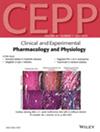Chlorogenic Acid Improves Salicylic Acid-Induced Cochlear Injury by Reducing Oxidative Stress and Inflammatory Response Through TLR4/NF-κB Signalling Pathway
Abstract
Background
Sodium salicylate (SS) causes hearing damage and tinnitus in humans and animals. Chlorogenic acid (CGA) has strong antioxidant and anti-apoptotic effects, but whether it can protect the cochlea is unknown.
Methods
SS was used to induce cochlear injury in rats, followed by 150, 300 and 600 mg/kg CGA treatment. The changes of tinnitus behaviour in each group were detected by auditory brainstem response (ABR), behavioural test, beam balance, Preyer reflex and auditory startle test. The levels of oxidative stress and inflammation were detected by kit. The pathological damage of cochlea was detected by HE staining, immunofluorescence staining, succinate dehydrogenase staining, and toluidine blue staining. The apoptosis of outer hair cell and spiral ganglion cell and TLR4/NF-κB pathway were detected by TUNEL staining, immunohistochemistry, immunofluorescence and Western blot.
Results
After SS induction, the ABR threshold, EP score and beam balance score of the rats increased significantly, and the AA score, Preyer reflex and auditory startle response decreased significantly; that is, the cochlear injury model was successfully constructed. Together, the levels of oxidative indexes (ROS, MDA) and inflammatory indexes (TNF-α, IL-1β) in rats after cochlear injury were significantly increased, and the spiral ganglion, organ of Corti, outer hair cells and nerve fibres of cochlear tissue were severely damaged. The outer hair cell and spiral ganglion cell were significantly apoptotic, and the number of TLR4 positive cells, NF-κB p65 fluorescence intensity and protein level in the cochlea of rats were significantly increased. However, after CGA treatment, the above indicators were significantly improved.
Conclusion
CGA can reduce SS-induced oxidative stress and inflammatory response in the cochlea through restraining the TLR4/NF-κB pathway, improve the pathological damage of the cochlea and reduce ototoxicity.


 求助内容:
求助内容: 应助结果提醒方式:
应助结果提醒方式:


